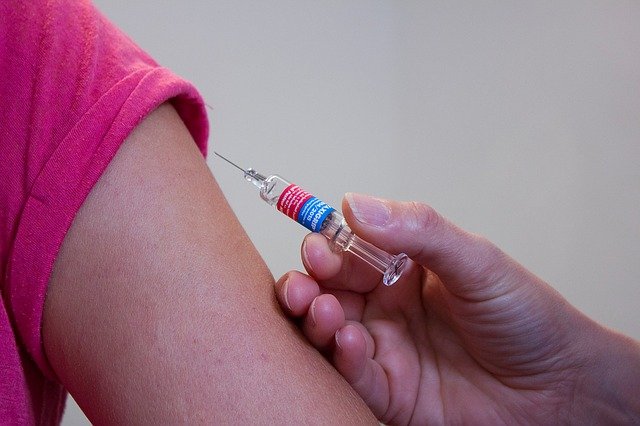
The battle against COVID-19 has been dominating the headlines for more than a year now. First, it was the disease itself: the scramble to figure out how it was spreading and what safety measures would help to slow it down.
Fast-forward 12 months, however, and the conversation has changed. Wearing face masks and staying 2 metres apart have become second nature for much of the general public; these days, we're more interested in talking about the vaccines that represent our best hope for a return to normal life.
Multiple COVID-19 vaccines are already being administered to vulnerable people all over the world. With so much noise and misinformation flying around regarding all the different vaccines, it's important to understand how vaccines are developed so that you do not fall victim to false or misleading claims.
[more]
Vaccine Development: What You Need to Know
How long does it take to approve a vaccine?
The development of a new vaccine is a long and complex process, typically taking 10 to 15 years and involving several important parties from both the public and private sectors. Before a vaccine can be made available to the general public, it must go through several stages of development.
Stages of vaccine development
Stage 1: The Exploratory Stage
The first stage involves basic laboratory research and tends to last for 2 to 4 years. Here, academics and scientists identify natural or synthetic antigens that may help to prevent or treat a disease. These might include: weakened bacterial toxins, weakened viruses, virus-like particles, and other substances derived from pathogens.
Stage 2: The Pre-Clinical Stage
In the second stage of vaccine development, pre-clinical studies use cell-culture systems and animal testing to examine the safety of the possible vaccine and its ability to provoke an immune response. Animal studies give scientists a general idea of the cellular responses they're likely to see in human beings; these tests can also help the team to decide on a safe method of administering the vaccine and a safe starting dose for the next phase of development.
Many proposed vaccines never make it past this stage because they fail to produce the necessary immune response.
Stage 3: Clinical Development
The clinical development stage consists of a three-phase process. During the first phase, small groups of people (usually between 20 and 80 subjects) receive the vaccine. This helps to determine the safety of the proposed vaccine and assess the type and extent of the immune response that it provokes.
In phase two, the clinical study is expanded and the vaccine is administered to people who have characteristics (such as age and physical health) similar to those for whom the vaccine is intended. The goal here is to study the vaccine's safety, immunogenicity, proposed doses, schedule of immunisation and method of delivery.
During phase three, the vaccine is given to thousands of people and, again, tested for both safety and efficacy. During these randomised, double-blind trials, the vaccine is tested against a placebo to make sure it has a genuine benefit.
Stage 4: Review & Approval
After a successful trial in phase three of the clinical development stage, the vaccine developer will submit an application for approval. This requires an inspection of the factory where the vaccine will be made and approval of the labelling.
Stage 5: Manufacturing
The next stage of vaccine development is the manufacturing process. Here, millions of doses of the vaccines are made to be sent all around the world to the countries that place orders.
Stage 6: Quality Control
The final stage of vaccine development is quality control. Here, final checks are carried out before the vaccine is given the green light for global distribution.
Vaccines are developed, tested and regulated in a very similar fashion to other medications. However, as a general rule, vaccines are far more thoroughly tested than other drugs - simply because the number of human subjects involved in vaccine trials tends to be greater. Also, the post-approval of vaccines is very closely monitored and examined by regulators such as the Food & Drug Administration (FDA) in the United States and the Medicines and Healthcare products Regulatory Agency (MHRA) here in the UK.
How were the COVID-19 vaccines developed so quickly?
Now that you know all the steps involved in vaccine creation and approval, you're probably wondering: how were scientists able to develop not just one but several vaccines for COVID-19, a totally new disease, in under a year?
Unfortunately, the speed with which the COVID-19 vaccines were produced has fuelled a lot of misinformation about their safety and effectiveness. But there are a number of very good reasons why these vaccines materialised so quickly:
- Governments all over the world were desperate to get their hands on a vaccine ASAP, so there was an enormous amount of funding available and some countries (including the UK) were even pre-ordering vaccines before they had been approved.
- COVID-19 is caused by a coronavirus, SARS-CoV-2. While this particular coronavirus hadn't been seen before the first outbreak in Wuhan at the very end of 2019, scientists had previously conducted research on other coronaviruses, and many of their findings were adapted to help speed up the creation of a COVID-19 vaccine.
- Virtually everyone has been affected by the COVID-19 pandemic, and most of us are eager for things to get back to normal. So when the vaccines were ready for clinical trials, there was no shortage of volunteers! (The popularity of social networks like Facebook and Twitter has also made it easier for scientists to recruit willing test subjects.)
In short, the COVID-19 pandemic has created an exceptional situation in which just about everybody - from world leaders and finance ministers to the friends and neighbours who populate our local communities - is fixated on the goal of developing an effective vaccine. This has helped to speed up the process enormously.
It also helps that we live in a hyper-connected world where scientists, governments and healthcare providers on opposite sides of the planet can communicate with one another instantaneously and work together to solve this global crisis.
More from HRS:
